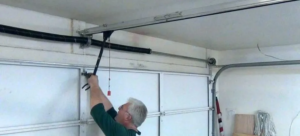Plumbing is the system of pipes, fixtures and other components that deliver water and sewage throughout buildings. Plumbers install, repair and maintain these systems. They often interpret blueprints and building codes to guide their work. Contact Rosenberg Plumbing for professional help.

Your home’s plumbing is complex and vital to your everyday life. Understanding basic plumbing principles can help you identify and fix problems before they become major disasters.
Pipes transport potable water throughout the home and carry wastewater away to the sewer system. They’re a vital part of any plumbing system, and it’s important for homeowners to know the different types of pipes used in home plumbing so they can make informed decisions when doing DIY projects.
Copper pipes are a long-standing standard within the plumbing industry due to their durability, longevity, and resistance to corrosion. They’re commonly found in hot- and cold-water supply lines, as well as refrigerant lines in HVAC systems. Copper pipes must be soldered, so it’s recommended to use a high-quality lead-free solder like Oatey(r) 95/5 Plumbing Wire Solder when installing copper plumbing.
PVC is a popular plumbing pipe material that’s available in various thicknesses, allowing it to be used in both indoor and outdoor plumbing applications. It’s resistant to both freezing and boiling temperatures, and it can hold high water pressure. PVC pipes are also durable and can last for decades when properly maintained. It’s important to note, however, that PVC isn’t ideal for exposed or buried outdoor plumbing lines because it can degrade in sunlight and freeze when exposed to freezing temperatures.
PEX pipes, also known as cross-linked polyethylene, are a more recent type of plumbing pipe that’s becoming increasingly popular for main water supply lines because they’re easy to install and offer superior flexibility. They’re able to withstand high water pressure and are resistant to scale and chlorine, making them a good choice for homeowners who want durable plumbing pipes that don’t require a lot of maintenance. PEX pipes are also color coded for easy identification and can be installed in wall cavities without the need for additional supports or fittings.
Other types of plumbing pipes include cast iron and galvanized steel, both of which are typically found in older homes and can cause rusting or corrosion when not properly maintained. These pipes are not recommended for modern plumbing, as they can leak or burst when subjected to pressure or temperature extremes. They’re often incompatible with metal fittings and valves, and they can degrade quickly when exposed to direct sunlight.
Fixtures
Whether you’re renovating an existing home or building a new custom house, selecting the right fixtures is essential to your design and comfort. From sink basins to shower heads, plumbing fixtures are the elements that bring your space together. Learn more about how these components work, what the different options are, and how to choose the best fixtures for your home.
A fixture is any component of a plumbing system that delivers water or removes wastewater. Common plumbing fixtures include sinks, faucets, toilets, and bathtubs. They play an important role in a residential or commercial plumbing system, providing access to clean water for everyday use and removing waste efficiently. Plumbing fixtures are available in a wide range of sizes and styles to accommodate different preferences and needs.
When choosing a plumbing fixture, it’s important to consider its material and style. A durable, corrosion-resistant material will ensure your fixtures last longer and look better in the long run. A polished finish is also attractive and easy to maintain. In addition, you’ll want to choose fixtures that match the overall style of your home.
Many homeowners are drawn to chrome plumbing fixtures due to their durability and timeless style. However, stainless steel and bronze are also popular choices for their beauty, strength, and versatility. When selecting a plumbing fixture, you’ll also need to think about its installation and maintenance requirements. A simple, straightforward installation will save you time and money in the long run.
The drain valves in a faucet are another important aspect of the fixture. You’ll want to choose a drain valve with a washer that prevents leaking and is compatible with your current pipes. Also, make sure the drain valve is installed properly to avoid leaks and other problems.
When shopping for plumbing fixtures, it’s important to prioritize functionality over aesthetics. A stylish fixture that doesn’t perform well will only lead to frustration and disappointment. Choose fixtures that are designed to meet your daily needs and offer features like adjustable settings, water-saving capabilities, and ergonomic designs.
Water Heaters
Most homeowners are familiar with water heaters, which provide the hot water we use for tasks like washing dishes and taking showers. These appliances are sized and powered to match each household’s needs, and available options include tank and tankless models as well as different energy sources and capacities.
Electric water heaters convert electricity into heat to warm up water in an insulated tank. They typically feature an element or coil which sits inside the tank and a dip tube, which sends new water to the bottom of the tank as hot water rises. As this new water passes through your pipes, it is heated by the hot water element or coil, bringing it to your desired temperature.
Gas water heaters, meanwhile, use natural or propane gas to fuel an internal combustion engine that produces heat. The combustion process is vented to the outdoors through a vent pipe, and a flue protects the system from carbon monoxide poisoning. These units also have a pressure relief valve and drain, which can release excess pressure or tank contents in an emergency.
A water heater pan is a metal basket that is installed beneath a water heater to catch spills, condensation and leaks from the unit. It is especially important for gas water heaters, as the flammable liquid can spill or overflow from a pan that isn’t properly positioned. A water heater pan can also protect floor surfaces and individuals from bacterial contamination, as bacteria that thrive in low-temperature conditions like those found in hot water tanks may grow to dangerous levels.
It’s a good idea to drain the tank on a regular basis, about once every two or three years, to reduce sediment buildup and prolong the unit’s lifespan. This is an easy task, though it should only be undertaken after turning off the power or gas to the unit and shutting off the cold-water supply valve. Then, drain the unit and dispose of the sediment. Opening the cold-water supply valve briefly while doing so can help stir up the sediment and speed up the draining process.
Sewer Systems
When wastewater leaves your home, it travels to either the sewer line or a septic system. Both systems have the job of transporting, treating, and disposing of your wastewater. As such, they’re an essential part of your plumbing and must be in good working condition to ensure that your home is safe and sanitary.
In urban areas, where septic systems are less common, a combined sewer system is typically used to convey both residential and commercial wastewater. The system consists of pipes, manholes, inspection chambers, pumps, and screening chambers that all work together to ensure water quality. During severe weather events, however, stormwater and wastewater may combine in the sewer system, causing raw sewage to flow back into homes.
Inside your home, a network of pipes collects the wastewater from your sinks, toilets, showers, and appliances. These pipes are sloped in a way that relies on gravity to guide the wastewater towards the sewer line or septic tank. These pipes are often lined with PVC or ABS. They’re also often covered by grates or covers, which help to prevent debris from clogging the drains while still allowing wastewater to flow through.
These drain pipes connect to individual fixtures in your home via fixture drains. Each fixture drain is connected to the main drain line through a trap, which is a curved section of pipe that holds a small amount of water to create a seal and prevents sewer gases from entering your living spaces. The main drain line then connects to the sewer or septic system, depending on where your home is located.
Sewage line problems can include:
Tearing up the ground to inspect and repair a sewer system is not exactly a weekend project most homeowners would look forward to. But when the wastewater in your home isn’t leaving the premises as it should, that’s when it’s time to call a professional plumber. Fortunately, modern plumbing experts have many ways of detecting issues with your sewage line without digging up the entire system. The key is to know the signs and symptoms of a problem, which are:








